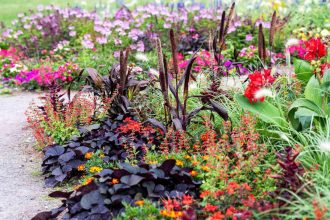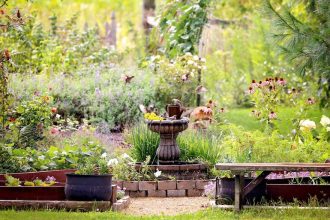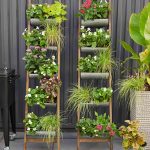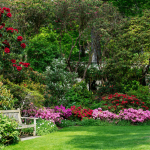In a world filled with hustle and bustle, creating a Zen garden can provide a much-needed sanctuary for peace and tranquility. Embracing simplicity and harmony, a Zen garden is a place for contemplation and reflection. By following a few simple steps, you can bring the essence of Zen into your own outdoor space. Join us as we explore the art of creating a Zen garden and discover how you can cultivate a sense of serenity in your own backyard.

Choosing the Perfect Location for Your Zen Garden
Consideration of Location:
When selecting the perfect location for your Zen garden, it is important to take several factors into consideration. One of the key elements to keep in mind is the amount of sunlight that the area receives. Zen gardens typically thrive in areas that receive ample sunlight, so choosing a location that gets plenty of natural light is essential. Additionally, consider the surrounding environment and choose a location that is peaceful and quiet to create a serene atmosphere.
Accessibility and Size:
Another important factor to consider when choosing the location for your Zen garden is accessibility. Make sure that the location is easily accessible and that you can easily transport materials to and from the area. Additionally, consider the size of the space available for your Zen garden. While Zen gardens can vary in size, it is important to choose a location that is large enough to accommodate the elements you wish to include, such as rocks, gravel, and plants.
Essential Elements for Creating a Tranquil Space
Creating a Zen garden involves incorporating essential elements that promote a sense of tranquility and peace. One key element is minimalism, which helps to create a sense of spaciousness and simplicity. By keeping the design clean and uncluttered, you can foster a serene environment that allows for relaxation and meditation.
Another important element is the use of natural materials such as gravel, rocks, and sand. These elements not only add a sense of earthiness to the space but also provide a grounding effect. The sound of gravel crunching underfoot and the smooth texture of stones can help to create a sensory experience that promotes mindfulness and calm.
In addition to natural materials, incorporating water features can enhance the sense of tranquility in a Zen garden. Whether it’s a small fountain, a pond, or a simple water basin, the sight and sound of running water can have a soothing effect on the mind. The gentle flow of water can help to drown out external noise and create a sense of serenity. Don’t forget to also add greenery such as bamboo, bonsai trees, or other plants to bring a touch of nature to the space.
Designing and Layout Tips for a Harmonious Zen Garden
When creating a Zen garden, it is important to consider the overall design and layout to ensure a harmonious and tranquil space. Here are some tips to help you achieve the perfect Zen garden:
- Keep It Simple: Zen gardens are known for their minimalist design, so keep the elements simple and uncluttered.
- Balance Elements: Balance is key in a Zen garden, so make sure to incorporate elements such as rocks, gravel, water, and plants in a harmonious way.
- Create Focal Points: Use focal points like a carefully placed rock or a striking plant to draw the eye and create a sense of calm.
Another important aspect of designing a Zen garden is the layout. Consider the flow of the space and how visitors will interact with it. Paths can lead visitors through the garden, offering different views and opportunities for contemplation. Here is a simple layout plan to get you started:
| Element | Placement |
|---|---|
| Rocks | Strategically placed to create visual interest |
| Plants | Grouped in clusters for impact |
| Water Feature | Centrally located for a calming effect |
| Pathways | Curved to encourage a sense of exploration |
Selecting the Right Plants and Decorative Features
In a Zen garden, the selection of plants and decorative features is crucial to create a harmonious and peaceful atmosphere. When choosing plants for your Zen garden, opt for those that are low-maintenance and bring a sense of tranquility. Consider incorporating elements such as:
- Bamboo: Known for its grace and flexibility, bamboo symbolizes resilience and strength.
- Japanese Maple: With its vibrant colors and delicate leaves, the Japanese Maple adds a touch of elegance to the garden.
- Moss: Moss is a traditional element in Zen gardens, symbolizing simplicity and humility.
In terms of decorative features, simplicity is key. Choose items that have a calming effect and help create a sense of balance in the space. Some popular decorative features in Zen gardens include:
- Stone Lanterns: Stone lanterns not only provide light but also add a sense of serenity to the garden.
- Raked Gravel: Raked gravel represents water in Zen gardens and is used to create patterns that symbolize harmony and balance.
- Buddha Statue: A Buddha statue serves as a focal point in the garden, reminding us to find peace and mindfulness in our surroundings.
By carefully for your Zen garden, you can create a space that promotes relaxation, contemplation, and inner peace. As you embark on your journey to create a Zen garden, remember that the true essence of this peaceful sanctuary lies in simplicity, mindfulness, and harmony with nature. With each carefully placed rock, each delicately raked pebble, and each thoughtfully chosen plant, you are cultivating not just a garden, but a space for inner calm and reflection. May your Zen garden bring you tranquility, balance, and joy for years to come. Embrace the serenity, and let the beauty of your creation inspire a sense of peace in your heart and soul. Start digging, planting, and raking your way to your very own haven of Zen. Namaste.




















